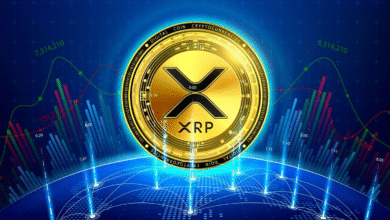Complete Ethereum Investment Strategy 2025 Expert Guide to Maximize Returns

The cryptocurrency landscape continues to evolve rapidly, and developing a solid Ethereum investment strategy for 2025 has become crucial for both new and experienced investors. As we navigate through 2025, Ethereum stands as the second-largest cryptocurrency by market capitalization, offering unique opportunities for portfolio growth and diversification. This comprehensive guide will explore proven strategies, market insights, and expert recommendations to help you build a successful Ethereum investment approach.
Whether you’re looking to enter the Ethereum market for the first time or refine your existing investment approach, understanding the current market dynamics, technological developments, and strategic frameworks is essential. The Ethereum ecosystem has undergone significant transformations, from the successful transition to Proof of Stake to the growing adoption of layer-2 solutions, making 2025 a pivotal year for strategic positioning.
Understanding Ethereum’s Market Position in 2025
Ethereum has solidified its position as the leading smart contract platform, hosting thousands of decentralized applications (dApps) and serving as the foundation for decentralized finance (DeFi) protocols. The network processes billions of dollars in transactions daily, demonstrating its robust utility and growing adoption across various sectors.
The transition to Ethereum 2.0 has fundamentally changed the network’s economics, introducing staking rewards and reducing energy consumption by over 99%. This shift has attracted institutional investors who previously avoided cryptocurrency due to environmental concerns. Major corporations, including Microsoft, JP Morgan, and Visa, have integrated Ethereum-based solutions into their operations, validating the platform’s long-term viability.
Market analysts project continued growth for Ethereum throughout 2025, driven by increasing adoption of smart contracts, non-fungible tokens (NFTs), and decentralized finance applications. The network’s ability to process complex transactions and support innovative financial instruments positions it uniquely in the cryptocurrency ecosystem.
Core Components of an Effective Ethereum Investment Strategy 2025
Dollar-Cost Averaging (DCA) Approach
Dollar-cost averaging remains one of the most effective strategies for Ethereum investment, particularly for long-term investors. This approach involves making regular purchases of ETH regardless of price fluctuations, helping to smooth out volatility and reduce the impact of market timing decisions.
Implementing a DCA strategy requires discipline and consistency. Investors typically allocate a fixed amount monthly or weekly to Ethereum purchases, allowing them to accumulate positions during both market uptrends and downturns. Historical data suggests that DCA strategies have outperformed lump-sum investments over extended periods, especially in volatile markets like cryptocurrency.
The key advantage of DCA lies in its simplicity and emotional detachment from market movements. Rather than attempting to time the market, investors focus on consistent accumulation, reducing the stress associated with price volatility and market uncertainty.
Staking and Yield Generation Strategies
Ethereum’s transition to Proof of Stake has created new opportunities for passive income generation through staking. ETH holders can now earn annual yields ranging from 3% to 6% by participating in network validation, either through direct staking or liquid staking protocols.
Direct staking requires a minimum of 32 ETH and technical knowledge to run a validator node. However, liquid staking services like Lido, Rocket Pool, and Coinbase offer alternatives for smaller investors, allowing them to earn staking rewards without meeting minimum requirements or managing technical infrastructure.
Staking not only provides passive income but also contributes to network security and decentralization. The locked nature of staked ETH can help reduce sell pressure during market downturns, potentially supporting price stability over time.
Portfolio Diversification Within the Ethereum Ecosystem
A sophisticated eEthereuminvestment strategy 2025 extends beyond holding ETH alone. The Ethereum ecosystem encompasses numerous tokens, protocols, and investment opportunities that can enhance overall portfolio performance.
Layer-2 solutions like Arbitrum, Optimism, and Polygon have gained significant traction, offering faster transactions and lower fees while maintaining Ethereum’s security. Investing in these ecosystem tokens can provide exposure to Ethereum’s growth while potentially offering higher returns through their specific use cases and adoption.
DeFi protocols built on Ethereum, including Uniswap, Aave, and Compound, represent another diversification opportunity. These platforms generate revenue through transaction fees and offer governance tokens that can appreciate alongside platform growth and adoption.
Technical Analysis and Market Timing Considerations

Understanding Ethereum’s Price Cycles
Ethereum’s price movements often follow cyclical patterns influenced by market sentiment, technological developments, and macroeconomic factors. Understanding these cycles can inform investment timing decisions and risk management strategies.
Historical analysis reveals that Ethereum tends to experience significant price movements during Bitcoin halving cycles, regulatory announcements, and major network upgrades. The correlation between Ethereum and traditional financial markets has increased over time, making macroeconomic factors increasingly important for price prediction.
Successful investors often combine technical analysis with fundamental research, using support and resistance levels to guide entry and exit points while maintaining focus on long-term value propositions. This approach helps balance short-term trading opportunities with long-term investment goals.
Key Technical Indicators for Ethereum Investment
Several technical indicators prove particularly useful for Ethereum investment decisions. Moving averages help identify trend directions and potential reversal points, while relative strength index (RSI) readings can signal overbought or oversold conditions.
Volume analysis provides insights into the strength of price movements, with high-volume breakouts typically indicating stronger trend continuations. On-chain metrics, including active addresses, transaction volumes, and network fees, offer additional fundamental data points for investment decision-making.
Combining multiple indicators creates a more comprehensive view of market conditions, helping investors make informed decisions about position sizing and timing. However, technical analysis should complement, not replace, fundamental research and risk management principles.
Risk Management and Security Best Practices
Implementing Proper Risk Management
Effective risk management forms the foundation of any successful Ethereum investment strategy in 2025. This includes position sizing, stop-loss orders, and portfolio rebalancing to maintain appropriate risk levels across different market conditions.
Position sizing involves determining appropriate investment amounts based on overall portfolio size and risk tolerance. Many experts recommend limiting cryptocurrency exposure to 5-10% of total investment portfolios, though this percentage may vary based on individual circumstances and risk appetite.
Stop-loss orders can help limit downside risk during significant market downturns, though their effectiveness in highly volatile markets requires careful consideration. Alternative approaches include periodic rebalancing and systematic profit-taking at predetermined price levels.
Security Considerations for Ethereum Holdings
Protecting Ethereum investments requires robust security measures, particularly given the irreversible nature of cryptocurrency transactions. Hardware wallets like Ledger and Trezor offer superior security compared to exchange storage, providing offline key storage and transaction signing.
Multi-signature wallets add an extra security layer by requiring multiple signatures for transaction approval, making them ideal for larger holdings or institutional investors. Regular security audits of storage methods and access procedures help maintain optimal protection levels.
Staying informed about common security threats, including phishing attacks, fake websites, and social engineering scams, helps investors avoid costly mistakes. Implementing strong passwords, two-factor authentication, and regular security updates across all related accounts provides additional protection layers.
Ethereum Investment Vehicles and Platforms
Traditional Investment Platforms
Traditional financial institutions have increasingly embraced Ethereum investment products, offering regulated exposure through various vehicles. Ethereum ETFs provide stock market access to ETH price movements without requiring direct cryptocurrency ownership or storage.
Grayscale Ethereum Trust (ETHE) offers another traditional investment avenue, though investors should understand the premium/discount dynamics and fee structures associated with trust products. These vehicles often trade at premiums or discounts to underlying asset values, creating additional considerations for investment timing.
Futures contracts and options provide sophisticated investors with leveraged exposure and hedging opportunities, though these instruments require advanced knowledge and carry significant risks. Professional guidance is often recommended when utilizing complex derivatives for Ethereum investment.
Decentralized Finance (DeFi) Opportunities
The DeFi ecosystem built on Ethereum offers numerous investment and yield-generation opportunities beyond simple ETH holding. Liquidity provision on decentralized exchanges can generate trading fees, though it involves impermanent loss risks that require careful consideration.
Yield farming protocols offer potentially high returns through various mechanisms, including lending, borrowing, and liquidity mining. However, these strategies often involve smart contract risks, token inflation, and complex tokenomics that require thorough research and understanding.
Ethereum-based synthetic assets and derivatives provide exposure to traditional financial instruments while maintaining decentralization benefits. These products enable portfolio diversification within the Ethereum ecosystem while potentially reducing correlation with traditional markets.
Market Trends and Future Outlook

Institutional Adoption Trends
Institutional adoption continues driving Ethereum’s growth trajectory throughout 2025. Major banks, investment funds, and corporations have allocated significant resources toward Ethereum-based solutions, validating the platform’s commercial viability and long-term prospects.
The development of regulated Ethereum investment products has lowered barriers for institutional participation, while improved custody solutions address security concerns that previously limited institutional involvement. This trend is expected to continue as regulatory clarity improves and infrastructure matures.
Corporate adoption of Ethereum for supply chain management, digital identity, and financial services creates sustained demand for network resources and ETH tokens. These use cases provide fundamental value support beyond speculative trading activity.
Technological Development Roadmap
Ethereum’s development roadmap includes several significant upgrades that could impact investment returns. Layer-2 scaling solutions continue expanding capacity while maintaining security, potentially increasing network utility and token demand. The implementation of sharding, proto-danksharding, and other scaling improvements aims to reduce transaction costs and increase throughput.
These developments could expand Ethereum’s addressable market and support higher transaction volumes. Privacy enhancements, zero-knowledge proof integration, and cross-chain interoperability features are also under development. These improvements could attract new use cases and user bases, potentially driving additional demand for ETH tokens.
Advanced Investment Strategies
Options and Derivatives Trading
Sophisticated investors may incorporate options and derivatives into their Ethereum investment strategy in 2025 to enhance returns or hedge risks. Covered call strategies can generate additional income from existing ETH holdings during sideways markets. Put options provide downside protection for large ETH positions, though the cost of option premiums must be weighed against potential benefits.
Collar strategies combine covered calls and protective puts to create defined risk-reward profiles. Futures contracts enable leveraged exposure and sophisticated hedging strategies, though they require advanced knowledge and active management. These instruments are best suited for experienced traders with comprehensive risk management systems.
Arbitrage and Market Making
Arbitrage opportunities occasionally arise between different exchanges or trading pairs, though they typically require automated systems and substantial capital to exploit effectively. Price discrepancies between centralized and decentralized exchanges can create short-term trading opportunities.
Market making involves providing liquidity to trading platforms in exchange for fees and spreads. This strategy requires sophisticated systems and risk management but can generate consistent returns in volatile markets. Cross-chain arbitrage opportunities may emerge as Ethereum interoperability improves, though these strategies often involve complex technical implementations and additional smart contract risks.
Regulatory Considerations and Compliance
Current Regulatory Landscape
The regulatory environment for Ethereum investments continues evolving, with different jurisdictions taking varying approaches to cryptocurrency regulation. Understanding local tax implications, reporting requirements, and compliance obligations is essential for all investors.
Recent regulatory developments have generally favored established cryptocurrencies like Ethereum, with regulators recognizing their utility and decentralized nature. However, ongoing regulatory uncertainty requires investors to stay informed about potential changes that could impact investment strategies.
Tax considerations vary significantly by jurisdiction and investment approach. Staking rewards, DeFi yield, and trading activities may have different tax treatments, requiring careful record-keeping and professional tax advice in many cases.
Also Read: Cryptocurrency Trading Platform Comparison 2025 Top 10 Exchanges Reviewed
Compliance Best Practices
Maintaining detailed records of all Ethereum-related transactions, including purchases, sales, staking rewards, and DeFi activities, ensures compliance with tax reporting requirements. Specialized cryptocurrency tax software can help automate record-keeping and tax calculations. Understanding anti-money laundering (AML) and know-your-customer (KYC) requirements for different platforms and services helps ensure compliance while maintaining privacy where legally permissible.
Choosing reputable, regulated platforms often simplifies compliance obligations. Regular consultation with tax professionals and legal advisors familiar with cryptocurrency regulations helps navigate complex compliance requirements while optimizing tax efficiency within legal boundaries.
Conclusion
Developing a comprehensive Ethereum investment strategy 2025 requires balancing opportunity with risk management while staying informed about technological developments and market trends. The strategies outlined in this guide provide frameworks for both conservative and aggressive investors to participate in Ethereum’s growth potential.
Success in Ethereum investment depends on understanding the underlying technology, maintaining proper security practices, and implementing disciplined risk management. Whether through dollar-cost averaging, staking, or advanced DeFi strategies, the consistent application of proven principles typically yields better results than emotional trading decisions.




